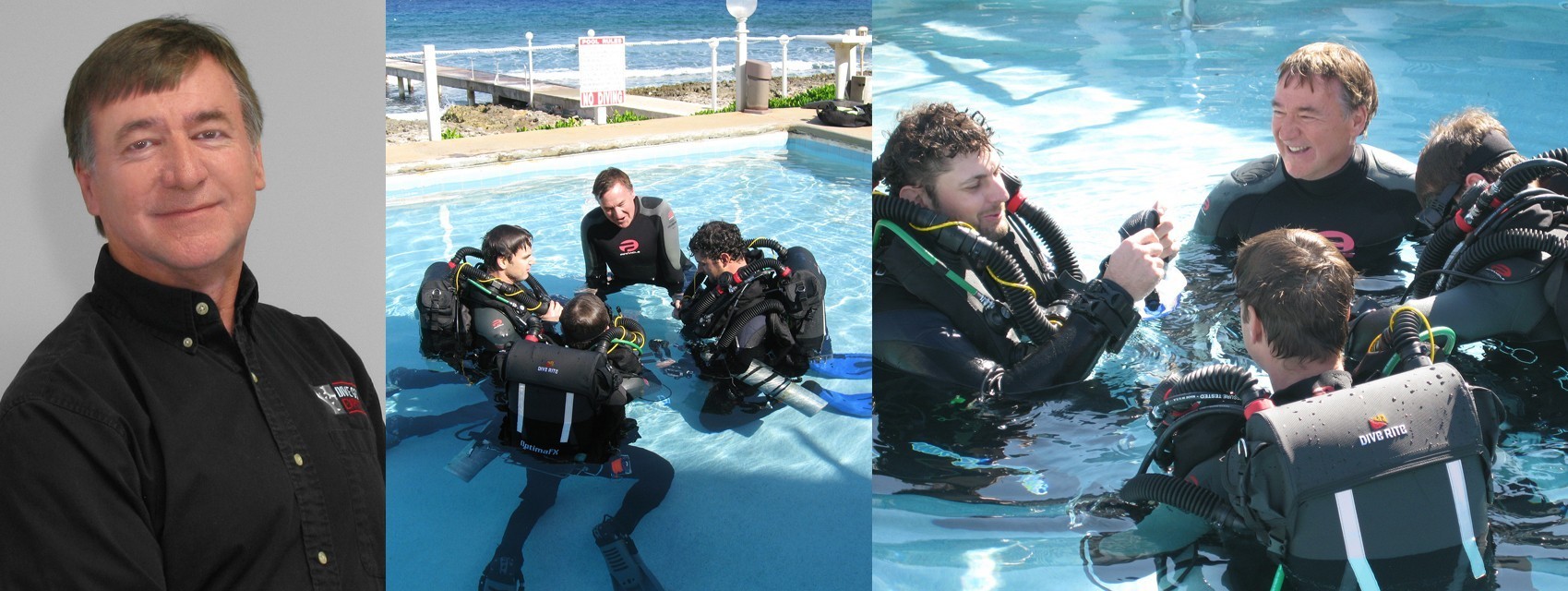Transitioning to Closed-Circuit Rebreather Diving
Below is general information on rebreathers, transitioning to closed circuit diving, and rebreather safety. Experienced rebreather divers seeking advanced training can skip to course descriptions, prices, and logistics, plus an equipment list for rebreather training.
by Mark Derrick
A long time technical diving instructor on staff at Dive Gear Express, Mark is the author of much of the content on this page and the opinions expressed here are solely his own. A certified SCUBA diver since the early 70's, Mark is originally from North Alabama. Earning his first rebreather instructor rating in the late 90's, in 2000 he retired from the information technology sector, moved to Florida and focused on diving and technical instructing. An active rebreather sport and technical diver and now based in Pompano Beach Florida, Mark is a CCR diving instructor for several different rebreathers and currently teaching the Poseidon Seven+ model at Dive Gear Express.
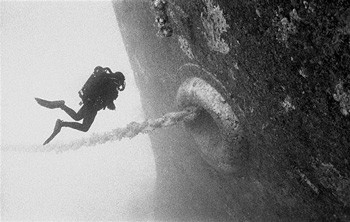
Some Rebreather Vocabulary
A SCUBA device that allows you to recycle what you breathe over and over again is called a rebreather. Your body burns the oxygen you inhale then you exhale the carbon dioxide waste, so a rebreather does the following:
- Captures and recirculates the gas you are breathing with a breathing loop.
- Purifies the gas to remove carbon dioxide with a process called scrubbing.
- Refreshes the breathing gas by adding replacement oxygen gas.
- Compensates for reducing loop volume during descent by adding inert diluent gas.
There are a variety of designs for rebreathers and their components. For recreational diving the most versatile and popular type of rebreather is the fully closed-circuit breathing loop and is often referred to as a CCR. The loop uses counterlungs to store the gas when you exhale and to supply the gas when you inhale. Also part of the loop is a scrubber canister, which contains chemicals to act as a carbon dioxide absorbent. As the oxygen in the loop is consumed by the diver, the CCR replaces it to maintain a constant level of oxygen known as the PO2 set point.
The rebreather set point can be controlled using either manual or automatic systems, or a combination of both. There are lower cost manual only rebreathers (mCCR) where the diver is responsible for monitoring the breathing loop via oxygen sensors and operating a valve to manually adjust the oxygen level. The most popular closed-circuit rebreather design today is capable of automatic electronic (eCCR) operation. The eCCR uses a small battery powered computer to continuously monitor the oxygen sensors and automatically control a solenoid valve to adjust the amount of oxygen. Hybrid design closed-circuit rebreathers (hCCR) include a simple passive orifice to continuously flow oxygen in to the loop at a low rate near resting metabolic consumption and use the oxygen solenoid to actively add more oxygen to achieve the PPO2 set point.
Deciding to Switch to Closed Circuit
CCR is a reasonable choice for any active diver who is looking at CCR as a new learning opportunity and personal accomplishment. If you are early in your project of researching the idea of diving with a rebreather, you could start by reading Basics of Rebreather Diving by Jill Heinerth. In reality, the information you need to make a decision is pretty straightforward.
Key Advantages of Rebreathers
- Silence - The closed-circuit rebreather produces almost no bubbles and the resulting silence enhances the dive in part because the marine life are not alarmed by the diver. If you are a photographer or marine scientist, the silence of the CCR will make huge improvement in your marine life interactions and photo opportunities.
- Extended Ranges for Depth and Time - The CCR carries hours of breathing gas regardless of depth, so diving time is no longer limited by the size of the tank. A rebreather can also greatly extend the no decompression time limits (NDL's) for sport divers. If you are a technical diver or overhead environment diver, then almost certainly a CCR makes sense.
Key Disadvantages
- High Cost - There is a wide price range, but the cost to become an eCCR diver is typically many times that of an open-circuit diver. Consumables in remote destinations can also be costly to obtain.
- Complexity - The rebreather being more complex means additional time spent on logistics and equipment maintenance. Rebreather divers must always plan ahead to assure availability of absorbent and oxygen.
Another way of analyzing the CCR decision is to ask yourself "Am I able to do the dives I want on open-circuit?" If the answer is "No" because your diving has reached a limitation that a rebreather could overcome, then it is time to consider becoming a closed-circuit rebreather diver.
What Are the Minimum Prerequisites to Become a Rebreather Diver?
In the early days of formal recreational dive training a rebreather certification was often viewed as the pinnacle of technical training with extensive prerequisites and contained an almost overwhelming amount of information; much of it being of questionable value and some information being of questionable veracity. However, modern rebreather training standards have both lowered the entry level prerequisites and raised the prerequisites for advancement; spreading the content over a safer progression of courses that allows for better skills development and knowledge retention. CCR accident analysis has improved the information content to focus on safety, and recent research has dispelled some of the misleading 'conventional wisdom' surrounding rebreathers. Today, to become a certified rebreather diver you need only be a certified sport Nitrox diver, although I also recommend "Deep" and "Rescue" sport diving certifications; as a practical matter you should also have some recent dive experience.
Rebreathers are revolutionizing technical diving, and many open circuit technical divers are considering switching to CCR. However, too rapid progression in CCR diving has been a factor in many accidents and now it is no longer possible to just "cross over" the highest level certification from open circuit technical diving directly to the closed circuit equivalent. Modern rebreather training guidelines require the open circuit technical training courses to be repeated in a slow progression of closed circuit versions. Although guidelines allow entry level rebreather training to include required decompression stops, best practice would be for all divers who wish to perform such dives first build some no-stop required experience with their rebreather. If you are currently a sport diver who expects to progress in to technical CCR diving, there is no significant advantage to completing any open circuit technical training before rebreather training.
Highly experienced divers switching to CCR often have an additional challenge: they must overcome their deeply ingrained open circuit mind-set and habits regarding dive planning, equipment configuration, breathing patterns, buoyancy control and gas management.
Are Rebreathers Safe?
At Rebreather Forum 3 (RF3) held in 2012, statistics were presented which suggest closed circuit rebreather diving is five to ten times higher risk than open circuit scuba. Some of the statistical increase may be due to rebreathers enabling divers to attempt extreme dive profiles which are themselves inherently higher risk than dive profiles attempted on open circuit. At the time, many experts were of the opinion a lack of experience, along with inadequate and poor quality training, was a widespread problem in the rebreather community.
Subsequently, The Rebreather Education & Safety Association (RESA) and the Rebreather Training Council (RTC) were formed. These organizations are not training agencies; they are consortiums of rebreather manufacturers, dive training agencies, and knowledgeable individuals who have established recommendations for a student to learn how to properly use their rebreather. RESA guidelines were published in 2018 to help address findings of inadequate training and rapid progression of training that are too often apparent in dive accidents. All major training agencies have updated their training standards and policies to align with the RESA guidelines. The Combined Rebreather Industry Standards Alignment Group (CRISAG) was formed in January 2019 to allow discussions between RESA and RTC delegates, with the aim of creating harmonized standards for the training of rebreather divers. CRISAG now works closely on the process of developing ISO Standards for rebreather diver training. While it might be too early to correlate the effect of these various efforts, data compiled by DAN and presented at Rebreather Forum 4 (RF4) held in 2023 suggests there has been no statistically significant improvement in rebreather diving safety in the previous 10 years.
No rebreather is foolproof, and the fact remains that compared to open circuit there is a disproportionate number of rebreather fatalities, many of which have ultimately been attributed to diver error. Your safety while diving is controlled by you, not by your rebreather.
What Rebreather Should I Buy?
Because many open circuit divers learned to dive on rental equipment, using a rental rebreather for the training course might seem to be a viable option. However, training is unit specific with a valuable benefit of the training course being the instructor will optimize the rebreather for your individual needs and that often includes specific adjustments and customizations to equipment. There are exceptions where using a rental unit is a necessity, typically because the student's own rebreather is backordered or temporarily out-of-service. There are also individuals who want the personal experience of a completing an entire rebreather training course but do not plan to own a rebreather and not require a diver qualification certification. In these rare circumstances, temporary access to a rental unit for the duration of the training course can be arranged. In most other circumstances, renting a rebreather for the training course is not recommended.
Buying your first rebreather is a 'chicken or the egg' dilemma, because prior open circuit experience can be misleading and you are not going to have enough experience with rebreathers at this point to make a perfect choice. There is no perfect rebreather; they all have strengths and weaknesses that make each uniquely more or less suited to your needs. The good news is that all of the major rebreather models are good quality units and as long as your first rebreather is from a well established manufacturer then you cannot make a bad choice. For an unbiased discussion of the selection process, but without endorsement of any particular brand or model, read Choosing Your First Rebreather by Tony Land.
For the TLDR; answer to this question: The Poseidon Se7en+ electronic CCR is sold and fully supported by Dive Gear Express. It is a richly featured and proven design with good redundancy from a well established manufacturer which favors the sport diver with intentions of continuing on to technical diving. It is also a uniquely automated design that is smaller, lighter and simpler to use than many other rebreathers. The Poseidon Seven+ is a robust eCCR choice that will take you as far as you wish to go in general sport and technical diving. As an independent dealer, we stock spares and consumables with online ordering and same day shipping. Dive Gear Express also offers Poseidon CCR instruction and periodic maintenance services at our facility in SE Florida.
If you are uncertain about your selection, a carefully supervised "rebreather experience" might help with narrowing your choice and Dive Gear Express is happy to organize a private trial. However, please keep in mind these experiences are of limited value because closed circuit diving has little in common with open circuit diving. Imagine entering the water knowing nothing about open circuit diving with no buoyancy control skills in an effort to select the "best" open circuit equipment for your needs. Like automobiles, once you have selected a specific rebreather there are still several configuration options to determine the final unit to be delivered. Our experienced rebreather staff at Dive Gear Express stand ready to advise you on the various options, but our detailed Se7en+ FAQ will answer many of your questions about the specific model we sell.
Perhaps the most important decision you will make is not the brand or configuration of your rebreather, instead the most critical decision you will make is choosing your instructor.
What about Rebreather Travel Logistics?
All the rebreather manufacturers have designed their units to be reasonably "travel friendly," but no rebreather is as friendly as the manufacturers would like you to believe. Open circuit divers typically travel with a "dive bag" of equipment plus their usual luggage. With sacrifices and utilizing carry-on, many closed circuit divers might also be able to travel with the same number of bags, but as a practical matter it can be a challenge to remain within the airline single bag 50 pound weight restriction. You will be able to stay within the airline single bag 70 pound maximum weight limit, but often two lighter dive bags are much easier to handle. Either way, as a rebreather diver you should expect to be paying more excess baggage fees than you did as an open circuit diver.
The other logistics issues associated with rebreather travel are availability of appropriately sized cylinders, oxygen fills, and carbon dioxide absorbent. The most challenging availability issue seems to be the cylinders and especially valves. For remote destinations, some divers ship the cylinders and absorbent ahead then leave them behind, selling/trading/donating to the dive operator upon departure. Even when the appropriate sized cylinders are known to be available at the destination, prudent divers often travel with a pair of specialized valves.
The good news is that as rebreathers have become more popular, many more dive destinations have the support infrastructure to make the rebreather logistics a relatively minor concern.
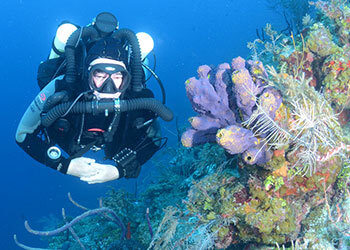
How Much Will All This Cost?
The short generic answer, without knowing anything about your circumstances, is budget up to $20,000 to switch to closed circuit rebreather sport diving. Here is how that breaks down: Most major brand eCCRs cost around $10K, sometimes a little less and very often more for fully optioned technical diving configurations. (Like automobiles, the low price in the advertising is rarely the final price paid to drive it out of the dealer lot.) To this you need to add roughly another $1K to $2K in accessories, plus a starter package of consumables such as absorbent. Some open circuit equipment you have might be able to be repurposed for closed circuit (bailout regulator, DSMB and reel, mask and fins, etc) but often at least some of your equipment will not be suitable and if not figure another $1K to $2K. The training costs are highly variable but about $2K is typical, sometimes more depending on boat trip costs. If the training is not available locally, then add whatever your preferences are for travel and a week of lodging, but assume an average of $2K to $3K. There are some corners you can cut to reduce initial costs, such as deferring technical options or buying refurbished equipment, but do not cut corners with the quality of the training.
The reality is that if a $15K to $20K budget gives you pause, then you probably should reconsider or delay switching to closed circuit.
Closed Circuit Rebreather Training Course Summaries and Prices
Rebreather training at Dive Gear Express is conducted to meet training agency specific standards. We offer a rebreather training course progression with multiple entry points and each program with different prerequisites, information, skills, dive exposures and limits; as taught at Dive Gear Express the programs are:
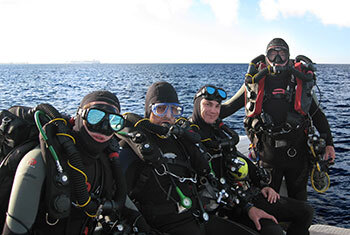
- CCR Diver -- This program is the entry point for open circuit sport divers. Divers learn to plan and conduct no-stop required CCR dives within sport diving limits. The emphasis in this program is on managing the rebreather and should an issue develop then safely ending the dive on open circuit bailout. The training time is approximately five days including open water training dives. Price for instruction and training materials is $2000.00; price does not include equipment rentals or boat trips.
- Decompression CCR Diver - 40M -- This skills intensive diving program is the entry point for open circuit technical divers with at least 50 hours of experience or CCR Divers with at least 30 hours experience. Available in an Air diluent version, we prefer the Helitrox (21% oxygen, 35% helium) diluent version and teach divers to plan and conduct required-stop decompression CCR dives to a maximum depth of {150 fsw | 45 msw} using normoxic trimix diluent and a single off-board bailout cylinder. Using trimix diluent rather than air offers the benefits of reduced narcosis, better work of breathing, and improved scrubber function. The emphasis in this program is on diagnosing and resolving in-water issues in order to remain on the rebreather loop whenever possible. The training time is approximately six to seven days including open water training dives. Two of the training dives will be deeper than {100 fsw | 30 msw} with a planned decompression obligation. Price for instruction and training materials is $2500.00; price does not include CCR consumables, equipment rentals or boat trips. This program content is sometimes referred to as "Mod 1 CCR".
- Decompression CCR Diver - 60M -- This program offers training to qualify the Decompression CCR Diver - 40M to independently plan and conduct multi-stop decompression dives to a maximum depth of {200 fsw | 60 msw} using Trimix diluent along with two bailout cylinders and gases. The diver also must have logged a minimum of 50 CCR dives and 50 CCR hours that includes at least 20 dives and 25 hours on the specific unit, at least 20 CCR dives deeper than {100 fsw | 30 msw}, and at least 10 CCR required-stop decompression dives. The student candidate must complete a series of progressively deeper open water multi-stop decompression training dives. Two of the training dives will be deeper than {160 fsw | 50 msw} with a planned decompression obligation. This program content is sometimes referred to as "Mod 2 CCR" but is tailored to the candidate's prior training and experience; contact us to discuss your specific goals.
- Decompression CCR Diver - 100M -- This program offers training to qualify the Decompression CCR Diver - 60M to dive to a maximum depth of {330 fsw | 100 msw} using very hypoxic Trimix gases and three bailout cylinders. The diver also must have logged a minimum of 100 CCR dives and 50 hours on the specific unit, at least 25 CCR multi-stop decompression dives deeper than {130 fsw | 40 msw}. The student candidate must complete a series of progressively deeper open water multi-stop decompression training dives. Other than an orientation dive within sport limits, all the training dives will be deeper than {130 fsw | 40 msw} with a planned decompression obligation and two of those training dives will be deeper than {230 fsw | 70 msw} with a planned decompression obligation. At this level, the required-stop training dives are typically conducted one per day. This program content is sometimes referred to as "Mod 3 CCR" but is tailored to the candidate's prior training and experience, contact us to discuss your specific goals.
- CCR Crossover -- These fast paced programs are for the experienced and active CCR Diver who wishes to cross-train for certification on a different model rebreather. Semi-closed circuit divers and CCR Divers who have less than 10 logged CCR dives in the last 12 months must take a full CCR course instead of a crossover. This program is tailored to the candidate's prior training and experience, contact us to discuss your specific goals.
Prerequisites and content as described above will vary as appropriate to meet specific dive training agency standards, but the programs at Dive Gear Express have similar structure and elements: online programmed instruction review and/or assigned reading completed prior to arrival, facilities orientation, prerequisites and standards review, safety discussion, hands-on detailed assembly and configuration of rebreather, classroom lectures, in-water equipment skills sessions, pre-dive trip briefings, rebreather setups using a checklist, half-day dive boat trips, open water training dives, post-dive trip debriefings, and exit interview. Class sizes at Dive Gear Express are a maximum of four students and CCR instructor; plus an in-water assistant when there are more than two students. We also provide additional education and learning opportunities whenever training agency standards and logistics allow. Please take a moment to review the RESA Minimum Requirements (December 2018) to discover what to expect from your CCR training.
As with any SCUBA course, training is purchased but certifications are earned only when the student and instructor are both in agreement the training requirements have been completed to their mutual satisfaction.
Your Rebreather Training at Dive Gear Express
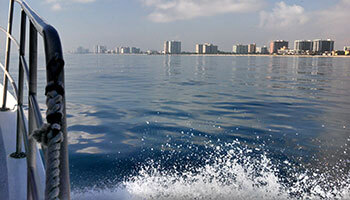
Training is normally done right here at our fully equipped facility in Pompano Beach, Florida USA. The logistics for rebreather diving are extremely good. Our facility has a comfortable classroom, meticulously maintained mixed gas and oxygen fill station, convenient work space for CCR setup and tear-down, extensive stock of consumables and spares, as well as on-staff equipment repair technicians. The water conditions are excellent year round (low 70's in the winter and low 80's in the summer) and the range of dives offer you a nice bit of experience (shallow and deep reef, shallow and deep wreck) to learn on your rebreather. On-site training is also available; we've organized training aboard yachts and at resort destinations all over the world.
Course openings are available most weeks of the year. Keep in mind that finishing on time assumes we will be able to dive without interruption from logistics or weather and we recommend planning for an extra day or two. We typically begin classes at 9AM on a Saturday morning and suggest travelling students plan their departure for Sunday of the following weekend at the earliest. We find many divers prefer a slower pace, and we are happy to accommodate. Send us some date ranges that work for you and we will reply with some specific choices of availability.
Travelling students may wish to stay at the Best Western Plus - Deerfield (4 stars on TripAdvisor), or the Hilton Doubletree - Deerfield (4 stars on TripAdvisor) or the La Quinta Inn - Deerfield (3 stars on TripAdvisor) because they are conveniently located. Dive Gear Express is on Powerline Road at the borderline between Deerfield Beach and Pompano Beach, there are clusters of the chain hotels at the junctions of I-95 and either Hillsboro Blvd or 10th Street. There are also a wide range of upscale private and chain hotels on the beaches in the area, the choice is entirely yours. You also will benefit from having a rental car during your stay or you can use a ride-share service such as Uber or Lyft.
There is a liability and assumption of risk waiver that you must read before class. There is also a form you must complete before class that contains questions about your health. If you answer "YES" to any of the questions, depending on the circumstances you may not be a suitable candidate for training or may be required to have a doctor's letter that clears you for scuba diving activities. If you are currently a smoker, we require you to refrain from smoking for 24 hours prior to any in-water activities on the rebreather.
In preparation for the course, we ask you to read the following, PRIOR to attending the first day of class:
- Course specific materials (typically printed manuals) and/or online learning courses as required by the training agency standards and supplied by Dive Gear Express.
- The manufacturer supplied user manual for your specific model rebreather. The primary goal for reading prior to class is that you can identify major sub-assemblies, key components and their functions - especially how to operate and interpret the electronics. Don't be concerned about details of the checklists at this point, you will review that content during class. The current version can be downloaded from the website of the manufacturer for your specific model rebreather.
- Rebreathers Simplified Revision 4 by Dr. Mel Clark. This text is recommended reading only for divers taking their first rebreather course. Although not a formal requirement of the training standard, this text is very useful in providing us with a common vocabulary, and also offers a great review of basic physics and physiology particularly as it applies to all rebreathers. This will save time in the classroom lecture, allowing that time to be spent gaining a deeper understanding of rebreathers. If you do not already have a copy of this manual, you may order it from the Dive Gear Express website.
Keep in mind that helping you to understand the material and answer your questions is a key part of the job of your instructor. We look forward to seeing you in class.
Equipment You Will Need for the CCR Diver Course at Dive Gear Express
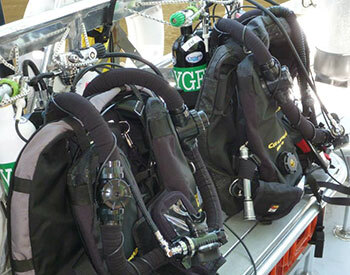
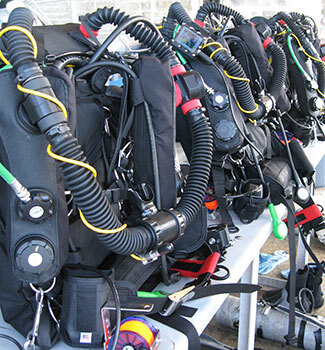
Rebreather diving is an equipment intensive sport. Obviously, you will need your rebreather with BCD and harness. If you purchased your rebreather from other than Dive Gear Express, most students arrange to ship their rebreather ahead to our offices in Pompano Beach. If you purchased your rebreather used, we recommend that it receive a factory authorized overhaul service prior to the course. Please be aware that training standards prohibit functional modifications to the rebreather unit that are not approved by the manufacturer. Other equipment you will need to bring:
- You will need a wet or semi-dry neoprene exposure suit, 3mil or 5mil in the summer, 5mil or 7mil in the winter, or you can use a dry suit. A full hood, even if just nylon, and tropical style dive gloves are a good idea and recommended.
- You will need technical style open-heel diving fins with boots. A spring or bungee heel strap design is strongly recommended.
- You will need a low volume dive mask that fits well without having to frequently clear it. A key feature of the mask is that you will need to be able to clearly see the heads up display mounted on your rebreather, this implies that you will need a lens with a large look down field of vision. If you have difficulty reading your gauges, you will need an appropriate vision correcting mask with a bifocal lens.
- You will need a delayed surface marking buoy (DSMB) along with a safety reel and a line cutting device.
- You will need a slate or other writing device. An executive slate or tablet style is best, underwater notepad style works too, but not a wrist slate. You will also need a surface alert such as a Storm whistle or signal mirror.
- For off-board open circuit bailout, you will need an open circuit regulator with a 40-inch LP hose plus an SPG with a short HP hose or a button gauge. If your CCR supports standard quick disconnect posts on the manual addition valves, a low-pressure BC inflator hose is also a good idea.
- For the advanced courses with planned required-stop decompression, you will also need a compact back up mask, a back up DSMB and spool/reel, and a backup dive computer that offers a constant PO2 mode (aka CCR mode).
- Please bring your dive certification cards along with your dive log as well as a photo ID. You will not be able to dive until we can verify your certification and the experience documented in your dive log meet the prerequisites required for training.
Tanks and weights are supplied as needed as part of the course at no charge, or you can bring your own if you prefer. We have CCR oxygen and diluent cylinder pairs of 2L and 3L aluminums and 2L, 3L and 4L steels, all with your choice of inline or modular valves, plus bailout 30's, 40's and 72's rigged for sidemount. If you bring your own cylinders they must have current hydro with annual VIP, be suitable for use with gases containing greater than 23.5% oxygen, and appropriately labeled. Dive Gear Express has a meticulously maintained fill station with a carbon monoxide detector, and can supply banked OCA grade Nitrox 32 and 21, UHP grade Trimix 21/35, ABO grade Oxygen 100, as well as custom gas blends for technical courses. We suggest you have your own gas analyzer, otherwise you can use the fill station analyzers.
You'll also need the usual other non-dive comfort stuff you are in the habit of using in tropical diving...swimsuit, towel, sunblock, sunglasses, etc. In the winter you will want a light jacket with hood or dive parka. If you don't have some item mentioned above, don't worry about it... we have one of the largest inventories of technical dive equipment in Florida.
Ready to dive silent? Contact us.
Open Circuit Etiquette with Closed Circuit Divers
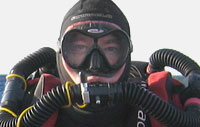
If you are an open circuit diver, it is becoming increasingly common to find yourself on a boat with a rebreather diver; or perhaps you may even get assigned a rebreather diver as a buddy. Like you, the rebreather diver has been trained to do a few minutes of setup and checks on their equipment before they dive. Often, another diver will approach and begin asking questions at just this moment. The rebreather diver really would like to talk about their equipment and answer questions, but part of their training included a reminder to avoid becoming distracted during their checks. Help them out by waiting until you see their setup is completed. If you are assigned a rebreather diver as a buddy, they will need to have a brief safety protocol discussion with you as there are some differences from your open circuit training.
